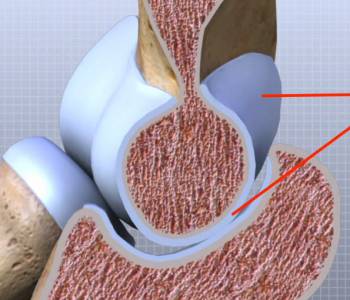Greetings
Check out our Facebook Page
 Over the past few months we have been adding 3-D anatomy videos to our patient education content.
Over the past few months we have been adding 3-D anatomy videos to our patient education content.
Click on the links below to see some of the new videos:
We will be adding more of these videos going forward. This is another way of helping our patients understand anatomy as it relates to injuries and conditions.
Last month, we also published over 100 new articles to our website.
Some of these include:
Featured Article: Backpacking
As spring arrives, many people gear up for outdoor activities.
Whether for hiking, camping, school, play or work, a backpack is a constant companion for most of us. When used correctly, backpacks are a safe and effective way to carry school materials, laptops, personal effects day-to-day as well as during travel or hiking.
However, carrying a backpack incorrectly can lead to muscle strains and problems with posture.
Learning a few simple techniques to carry a backpack safely can help people of all ages to avoid unnecessary aches, pains and back problems.
 Although backpacks have long been considered a school necessity, a number of studies over the past 10 years have highlighted the negative effects that carrying a backpack can have on students. Back pain rates ranging from 20% to over 70% have been reported among students depending on their age and gender, with girls being more frequently affected than boys.
Although backpacks have long been considered a school necessity, a number of studies over the past 10 years have highlighted the negative effects that carrying a backpack can have on students. Back pain rates ranging from 20% to over 70% have been reported among students depending on their age and gender, with girls being more frequently affected than boys.
Furthermore, backpack-related pain is not restricted to the young. Studies in adult hikers have shown that backpack weight can affect posture and alter muscle activity in the legs, in addition to increasing back and shoulder discomfort. Fortunately, the risks of carrying a backpack can be minimized by making small adjustments to their day-to-day use.
Keep it light
First, keep backpacks as light as possible. Try to avoid carrying unnecessary items, especially if they are heavy, and encourage your children to do the same. Loads greater than 10% of body weight can change spinal alignment and normal muscle function in the trunk. Keeping backpacks light is especially important in children, because early back pain may be related to back problems in adulthood. Higher weights do not necessarily cause back pain, but they increase the risk. In college students, a 4-kg (~8.8-lb) increase in the weight of the typical backpack load was associated with a 25% increase in the likelihood of experiencing lower back pain.
Also remember to respect the weight of your pack when you put it on and take it off. Bend at the knees, not the waist, when picking up a heavy backpack to reduce strain on the lower back, and avoid excessive twisting when placing your arms through the straps. Make sure that your children also know the correct way to lift their backpacks on and off.
Make it fit
Next, adjust the backpack to achieve the best possible fit and weight distribution. Backpack weight should be distributed over the mid- to lower back to minimize effects on posture. Modify the strap lengths so that the pack fits securely but does not sit too high on the back, and most importantly feels comfortable to you. Make sure the backpack is worn over both shoulders, not just one, to prevent one sided weight distribution. Additionally, arrange the items in your or your child’s backpack with the heaviest weight at the bottom and in such a way as to prevent items in the pack from shifting.
New features
If your backpack includes a waist belt, use it! If not, this may be a feature to look for the next time you upgrade to a new pack. The waist belt helps to distribute weight more evenly across the back and onto the hips. Other backpack features to consider in a new pack are padded straps and back support for increased comfort and better weight distribution. Separate compartments within a backpack can also help prevent items in the pack from moving. If you or your child needs to carry a heavy backpack or any backpack for a long period of time, consider using a backpack with wheels on the bottom, which allows it to be pulled along rather than carried.
References
Talbott NR, Bhattacharya A, Davis KG, Shukla R, Levin L. School backpacks: it's more than just a weight problem. Work. 2009;34(4):481-94.
Korovessis P, Koureas G, Papazisis Z. Correlation between backpack weight and way of carrying, sagittal and frontal spinal curvatures, athletic activity, and dorsal and low back pain in schoolchildren and adolescents. J Spinal Disord Tech. 2004 Feb;17(1):33-40.
Simpson KM, Munro BJ, Steele JR. Effect of load mass on posture, heart rate and subjective responses of recreational female hikers to prolonged load carriage. Appl Ergon. 2011 Mar;42(3):403-10. Epub 2010 Sep 25.
Simpson KM, Munro BJ, Steele JR. Backpack load affects lower limb muscle activity patterns of female hikers during prolonged load carriage. J Electromyogr Kinesiol. 2011 Oct;21(5):782-8. Epub 2011 Jun 25.
Devroey C, Jonkers I, de Becker A, Lenaerts G, Spaepen A. Evaluation of the effect of backpack load and position during standing and walking using biomechanical, physiological and subjective measures. Ergonomics. 2007 May;50(5):728-42.
Heuscher Z, Gilkey DP, Peel JL, Kennedy CA. The association of self-reported backpack use and backpack weight with low back pain among college students. J Manipulative Physiol Ther. 2010 Jul-Aug;33(6):432-7.
Brackley HM, Stevenson JM, Selinger JC. Effect of backpack load placement on posture and spinal curvature in prepubescent children. Work. 2009;32(3):351-60.